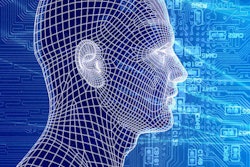
The Emerging Technologies in Medicine (ETIM) 2017 conference will be held at the Essen University Hospital in Germany on 10 and 11 February. The focus will be on two major technological trends: bioprinting and artificial intelligence.
Dr. Michael Forsting, professor and director of radiology and neuroradiology at Essen University Hospital, is presiding over the conference jointly with Dr. Jochen Werner, professor and medical director at the same hospital. In this interview, he explains how these hot topics relate to radiology.
 Dr. Michael Forsting from Essen, Germany.
Dr. Michael Forsting from Essen, Germany.German Radiological Society (DRG): How do systems that operate using artificial intelligence differ from the computer-assisted detection (CAD) systems being used nowadays in radiology?
Forsting: Software programs with artificial intelligence differ from the CAD systems that are currently in common use in diagnostics in that they are self-learning systems. The computer learns from the datasets that it receives and this fuels constant improvement. This means that we are now confronting what is probably the greatest challenge to artificial intelligence in medicine: a lack of valid datasets.
Big data is not the way to digital medicine, and neither is the unfiltered collection of unrated data. We need to be feeding digital medicine with validated datasets that are correct and can be used to educate the system.
Are such systems already in use?
Here in Essen we have installed a system that delivers reliable diagnoses for new imaging data, based on data from 700 proven radiological findings of interstitial pulmonary disease. The problem does not lie in the software, as Google has released its source code that can be used to develop diagnostic programs. The problem lies in the data situation. To this end, radiology departments are frequently solicited, particularly the ones at major hospitals, because a whole host of valid datasets is collected on a daily basis at these sites.
Is there not a concern that radiology could become surplus in the age of artificial intelligence?
Artificial intelligence is not going to take over in medicine just because it is cheaper or because it is designed to replace people. If it does take over, it will be because it is better than people. This has been shown clearly in automation within the field of laboratory medicine and in many other technical developments in medicine.
There's another point as well. Looking at changing demographics, with an aging and increasingly ill society, along with the enormous volume of images overwhelming radiologists nowadays, we can be grateful to have software support. Furthermore, we are a very long way indeed from finding answers to all the questions.
There is a further challenge, one which is anything but trivial, and that is knowing what is normal and how normality can vary, something that highly experienced radiologists know how to assess, but that computers find difficult to classify. On the other hand, we should not be knocking computers when it comes to rare diagnoses because, unlike the human brain, computers do not forget.
Can you tell us about bioprinting?
Bioprinting has already shown that it has multifaceted uses in practice, such as in connection with aortic prostheses used to treat aneurysms or catheters with a memory effect. It is of even greater interest in the biomechanical production of cartilage, airways and, sometimes, complete organs. When it comes to liver tissue, bioprinting is roughly at the experimental stage. All of this research work and all of these practical uses are closely linked to radiology because the 3D diagnostics used by radiologists provide the basic dataset for bioprinting. Radiologists are digitizing people.
For ETIM 2017, which disciplines do the speakers represent and who should attend?
Basically, anyone who has an interest in these two major technological trends in this digital age should attend our conference. Increasingly, our international speakers do not necessarily have a conventional medical background but have expertise in mathematics and IT, and some are engineers. We need greater communication with these disciplines because there is enormous potential for us here. Obviously, just as is the case with any other digital project -- such as driverless cars -- there will also be legal aspects to be considered in medicine.
Editor's note: This is an edited version of a translation of an article published in German online by the German Radiological Society (DRG, Deutsche Röntgengesellschaft). Translation by Syntacta Translation & Interpreting. To read the original article, click here.



















